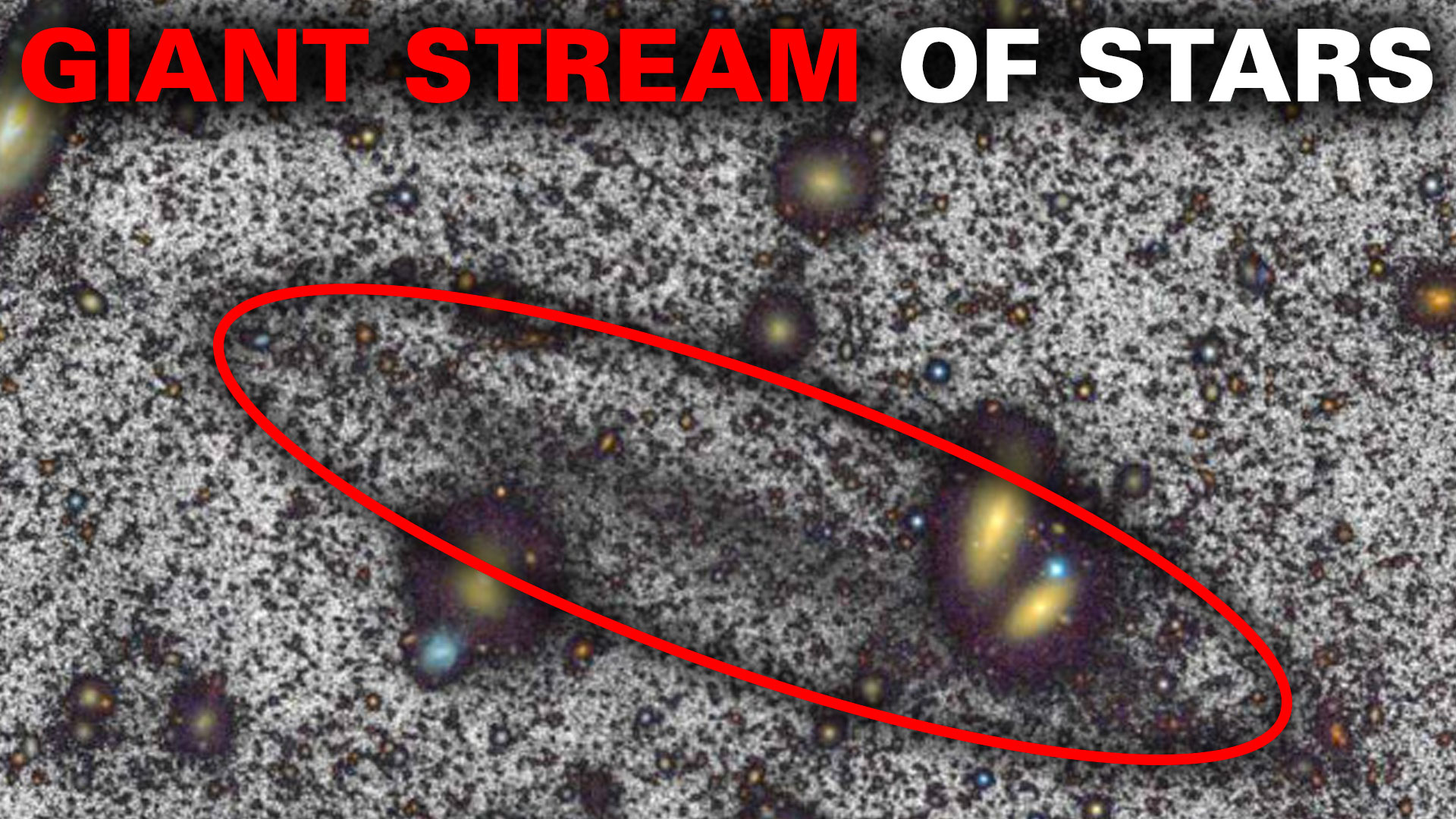The space between galaxies has long been considered a dead area. Single rogue stars may pop stars may pop up here or there, but the majority of this cosmic backward was considered empty by astronomers. But now, a paper from astronomers at various European and California institutions has found a trail of stars flowing between galaxies in a cluster.
They’re calling it the Giant Coma Stream, after the Coma Cluster of galaxies where it originates. Observing this cluster back in 1933, Fritz Zwicky, a Swiss astronomer, noticed that the galaxies in the cluster were moving too fast to be caused by only ordinary matter. The “dunkele Materie” (dark matter) that he proposed back then is still our best guess as to what is causing these galaxies to move so fast, even if we still don’t entirely understand what that means.
There were plenty of galaxies for Zwicky and the modern-day astronomers to look at. The Coma Cluster contains over a thousand cataloged galaxies and is about 300 million light-years away in the Coma Berenices constellation. It remains a favor of amateur astronomers because some of its brighter galaxies can seen with relatively small amateur telescopes.
Credit – EarthSky YouTube Channel
It was a relatively small amateur telescope, though one run by professional astronomer Michael Rich of UCLA, who also happens to be Neil de Grass Tyson’s PhD advisor. He initially used a 70-cm telescope in Califonia to detect a faint wisp of a trail of stars between galaxies in the cluster.
As with so much in astronomy, a bigger telescope was needed, so Dr. Rich reached out to his colleagues across the Atlantic and got some time on the 4.2-m William Herschel Telescope in Spain. This much larger telescope could see the full extent of the stream, and its scale was breathtaking.
From our perspective, the stream runs in a straight line in the middle of a complex gravitational environment of galaxies constantly disrupting each other’s trajectories. Even in that disruptive environment, the stream appears coherent and is almost ten times the size of our own galaxy.
Credit – SFIA YouTube Channel
This isn’t the first time astronomers have found streams of stars. Some have even been spotted in the Milky Way itself. But this is the first time that astronomers have found a stream large enough that it crosses the chasm between galaxies. It wasn’t even what they were looking for in the first place – Dr. Javier Roman of the University of Groningen and the University of La Laguna, who served as lead author on the paper, mentioned in a press release that his team was actually looking for halos around stars located in large galaxies, of which there are plenty in the Coma Cluster.
But now, this new research path has got him excited. Computer simulations the team developed after this first observation show that there could be many faint extragalactic bridges out there. With time, larger telescopes such as the Extremely Large Telescope, with a whopping 39-meter observational dish, and Euclid, which recently started releasing color images. With these more capable observational tools, Dr. Roman is confident they will find more extragalactic streams of stars. Due to the high demand, it might be a while before they can get some observational time on these newest observatories. Given the success of this paper, though, there might be plenty more star streams that can be found with smaller telescopes as well.
Learn More:
Astonomie.nl – Astronomers spot giant stream of stars between galaxies
Javier Roman et al. – A giant thin stellar stream in the Coma Galaxy Cluster
UT – A Star Near the Center of the Milky Way is a Visitor from Beyond
UT – A River of Stars Streaming Across the Sky
Lead Image:
Image of the Coma Cluster with the Giant Coma Stream shown as the black line from upper left to bottom right.
Credit – Roman et al.


I have often wondered what happens when the hyper velocity jets of AGN black holes slow and cool down when they meet the barrier of the intergalactic medium: does the medium create an environment that gravitationally seeds the matter from the jets into forming stars?
With many jets emanating from a galaxy cluster—hence there being a denser than normal galactic medium barrier in their vicinity, or jets bumping into each other long range— could the Giant Coma star stream have formed from AGN black hole jets as they coalesced?